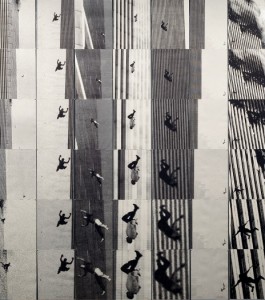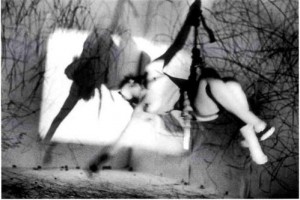Schneemann, Carolee, and Sands Wassink. Double Trouble: Carolee Schneemann and Sands Murray-Wassink. New York: Kathleen Wentrack, 2001.
– This small book discusses how both Sand Wassink and Carolee Schneemann confront issues of sexuality, and the cultural taboos associated with it, through their artwork.
Schneemann, Carolee. Carolee Schneemann (Early Work 1960/1970), Max Hutchinson Gallery (New York, N.Y.), 1982.
– In this book one can look at some of Schneemann’s less famous pieces, which include sculptures and paintings, which were her first, and favorite, medium. Instead of looking at her archetypal performance art, here her more traditional works are analyzed.
Carolee Schneemann: Up To And Including Her Limits. New Museum of Contemporary Art (New York, N.Y.), 1996
– A large part of this text looks at Schneemann’s ‘paintings’ and discusses how her style evolved over the years, with a heavy emphasis on the artistic eye. There is time spent looking at her performances, videos, and early paintings – it covers the range of her material.
Carolee Schneemann: Within and Beyond the Permises; Samuel Dorsky Museum of Art.;
New Paltz, N.Y. , 2010
– This book has the text of a 2009 interview with Schneemann herself and photos of her work ranging from 1969 all the way to 2009. It is a good guide to looking at her pieces of art without having a lot of text surrounding it, which allows the reader to inform themselves about the pieces.
Schneemann, Carolee. “Fuses.” Vimeo. Accessed March 15, 2015. https://vimeo.com/12606342.
– Where to watch (for free) the entirety of Schneemann’s film Fuses.
“Carolee Schneemann.” Carolee Schneemann. Accessed March 15, 2015. http://www.caroleeschneemann.com/index.html.
– The artist’s official website, with links to images of some of her most famous/well known works.
Quaintance, Morgan. “Carolee Schneemann’s “Water Light/Water Needle”” Art Agenda. Accessed March 15, 2015. http://www.art-agenda.com/reviews/carolee-schneemann’s-“water-lightwater-needle”/.
– This article discusses an exhibition of Schneemann’s in the Hales Gallery (London, England) in 2014. It focuses on her piece Water Light/Water Needle that was first performed in 1964.
Richards, Judith. “Oral History Interview with Carolee Schneemann, 2009 March 1.” Archives of American Art. March 1, 2009. Accessed March 15, 2015. http://www.aaa.si.edu/collections/interviews/oral-history-interview-carolee-schneemann-15672.
– This is an in depth transcription of an interview with Ms. Schneemann herself. It documents her entire life and her influences in becoming the world renowned artist that she is.


